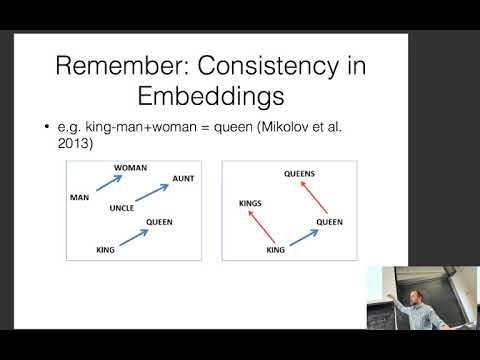Description:
Explore the intricacies of knowledge graphs and their applications in natural language processing in this 52-minute lecture from CMU's Neural Nets for NLP 2018 series. Delve into topics such as knowledge bases, structured databases, and WordNet. Examine the challenges of knowledge base incompleteness and learn about various relation extraction techniques, including Neural Tensor Networks and Hyperplane Translation. Discover the Decomposable Relation Model and methods for modeling distant supervision noise in neural models. Compare approaches for modeling word embeddings versus modeling relations, and investigate tensor decomposition. Conclude with an exploration of retrofitting embeddings to existing lexicons, gaining valuable insights into the intersection of knowledge representation and neural network technologies.

Neural Nets for NLP 2018 - Learning from-for Knowledge Graphs
Add to list
#Computer Science
#Artificial Intelligence
#Neural Networks
#Natural Language Processing (NLP)
#Knowledge Graphs
#Mathematics
#Algebra
#Linear Algebra
#Tensor Decomposition